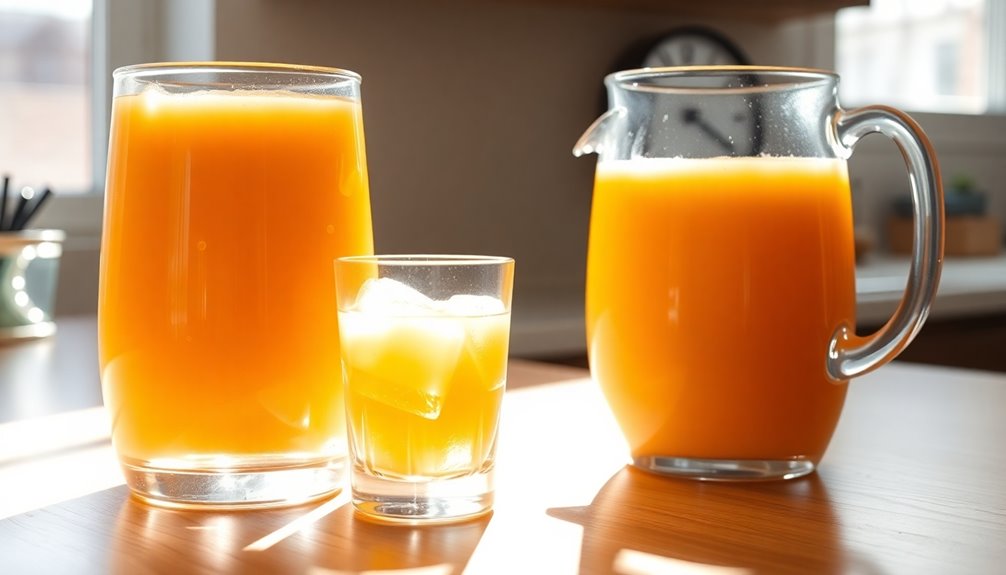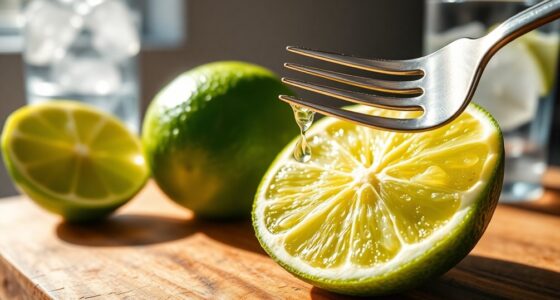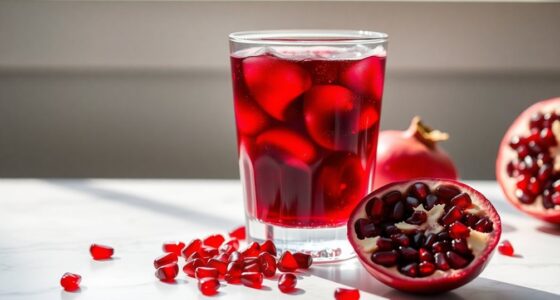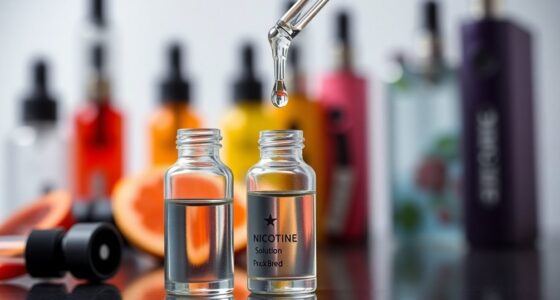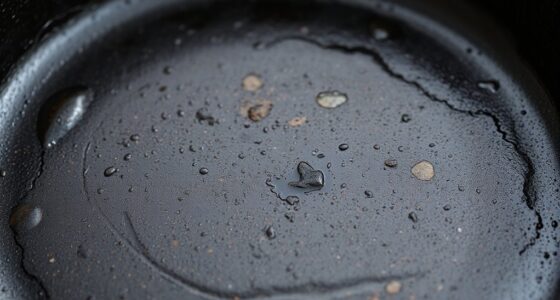Juice can sit out at room temperature for up to two hours, but if it's over 90°F, you need to limit that to just one hour. Bacteria love warmer temperatures, and fresh-squeezed juice spoils even faster. Once opened, always refrigerate juice and aim to consume it within a few days. If you've left juice out longer than recommended, it's best to toss it. Discover more tips for keeping your juice fresh and safe.
Key Takeaways
- Juice should not be left out at room temperature for more than two hours.
- If the temperature exceeds 90°F, limit juice exposure to one hour.
- Opened juice must be refrigerated immediately and consumed within a few days.
- Fresh-squeezed juice is more prone to spoilage and should follow the two-hour rule strictly.
- Always discard any juice left out beyond the recommended time to avoid health risks.

Have you ever wondered how long juice can safely sit out? It's a question that's more important than you might think. Whether you're enjoying a glass of fresh-squeezed juice or cracking open a bottle of pasteurized juice, knowing the limits can help you avoid harmful bacteria and foodborne illnesses.
Juice, regardless of its type, shouldn't be left out at room temperature for more than two hours. This is crucial because bacteria thrive in warmer environments, and letting your juice sit out increases the risk of spoilage. If the temperature is above 90°F, you should cut that time in half—it's best to avoid leaving juice unrefrigerated for more than one hour. This is especially important for fresh-squeezed juice, which is more vulnerable to bacterial growth and spoilage.
When you think about the shelf life of juice, it helps to differentiate between types. Unopened shelf-stable juice can last between one to two years, which is pretty impressive. However, once you pop that cap or unscrew that bottle, the rules change. Opened juice should be refrigerated and consumed within a few days to ensure safety and quality. If it's been left out for longer than the recommended time, it's best to discard it to avoid any health risks.
You may think that pasteurized juice is more forgiving, but you still need to be cautious. If an unopened bottle of pasteurized juice sits out, it can go back into the refrigerator without issue. Just make sure you haven't opened it yet.
But once it's open, treat it carefully. If opened pasteurized juice is left out, it should also be consumed within that two-hour window; otherwise, you risk inviting harmful bacteria to the party.
Fresh-squeezed juice is particularly susceptible to spoilage, so if you ever find yourself wondering whether it's still good after being left out, follow the two-hour rule closely. The freshness of the juice diminishes quickly, and you don't want to end up with a glass that could make you sick.
To sum it up, always refrigerate your juice after opening, and be aware of how long it's been left out. Keeping an eye on these guidelines will help you enjoy your juice safely and avoid foodborne illnesses.
Frequently Asked Questions
Can You Drink Juice That Has Been Sitting Out?
You shouldn't drink juice that's been sitting out for too long.
If it's fresh-squeezed, toss it after just two hours. Even pasteurized juice isn't safe after three hours, so keep an eye on it.
Look for signs of spoilage like a bad smell or off taste—if you notice those, don't take the risk.
Staying safe with your juice means being cautious about how long it's been left at room temperature.
Can We Drink Juice After 5 Hours?
You shouldn't drink juice that's been sitting out for five hours. At that point, the risk of spoilage increases significantly, especially for fresh-squeezed varieties.
Even if it looks okay, you might encounter unpleasant smells or off flavors that signal it's no longer safe.
If you care about your health, it's best to err on the side of caution and discard any juice left unrefrigerated for that long.
Stay safe and enjoy fresh juice!
How Long Does It Take for Juice to Get Spoiled?
Juice can spoil relatively quickly, depending on factors like temperature and exposure to air.
Typically, fresh-squeezed juice can start showing signs of spoilage within a couple of hours, while pasteurized juice may last a bit longer.
If you notice any off smells, strange tastes, or visible mold, it's best to discard it.
Always check the juice before consuming, especially if it's been sitting out for a while.
Better safe than sorry!
How to Pack Fresh Juice for School?
When you're packing fresh juice for school, use an insulated, well-sealed container to keep it cold and fresh.
It's best to refrigerate or freeze the juice overnight so it stays chilled until lunchtime. Consider adding ice packs to extend its freshness throughout the day.
If you want to ensure safety, opt for pasteurized juice, which has a longer shelf life and lower risk of spoilage.
Always check for any off smells before packing!
Conclusion
In the world of juice, time is of the essence. If you've left your juice out for more than two hours, it's best to toss it. Bacteria can multiply like rabbits in warm conditions, turning your refreshing drink into a health hazard. Always refrigerate leftovers to keep that vibrant taste and nutrition intact. Remember, a sip of caution is worth a gallon of regret when it comes to food safety. So, keep your juice chilled and enjoy!
Cindy thoroughly researches juicing trends, techniques, and recipes to provide readers with practical advice and inspiration. Her writing style is accessible, engaging, and designed to make complex concepts easy to understand. Cindy’s dedication to promoting the advantages of juicing shines through her work, empowering readers to make positive changes in their lives through the simple act of juicing.

